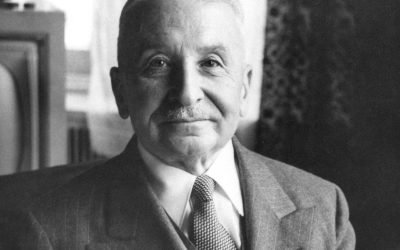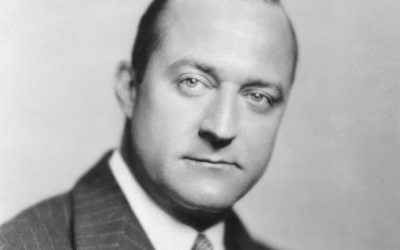The uniformity-of-profit principle explains how the profit motive acts to make production steadily increase in a free market. It explains how the profit motive becomes an agent of continuous economic progress.
In order to earn a rate of profit that is above average, it is necessary for businessmen to anticipate changes in consumer demand ahead of their rivals, to introduce new and/or improved products ahead of their rivals, or to cut the costs of production ahead of their rivals. I say, “ahead of their rivals,” because as soon as any innovation becomes general, then, in accordance with the uniformity of profit principle, no special profit can be made from it. For example, the first firms that produced shoes by machinery rather than by hand, or put zippers in clothing, or found a way to sell a cigar for ten cents, or whichever, were able to make above-average rates of profit by doing so. But once such things became general, no special profit could any longer be made from them. They became the ordinary standard of the industry and were taken for granted. Sooner or later, virtually every innovation does become general. This implies that for any firm to continue to earn an above-average rate of profit, it must repeatedly outdistance its rivals; it must work as an agent of continuous economic progress.
Perhaps one of the most dramatic examples of this is provided by the career of the first Henry Ford. When the Ford Motor Company began, in the early part of the twentieth century, the automobile was a rich man’s toy. Extremely primitive models by our standards were selling for about $10,000—in the very valuable money of the time. Henry Ford began to find ways to improve the quality of automobiles and at the same time cut the costs of their production. But it was not possible for Ford to make a single improvement or a single cost reduction and stop there, because it was not long before those innovations were generally adopted in the industry and, indeed, superseded. Had Ford stood pat, it would not have been long before his once profitable business was destroyed by the competition. In order for Ford to go on making a high rate of profit, he had to continuously introduce improvements and reduce costs ahead of his rivals. The same is true in principle, in a free market, of any individual or firm that earns an above-average rate of profit over an extended period of time. What was good enough once to make a high rate of profit, ceases to be good enough as soon as enough others are able to do the same thing. In order to go on earning an above-average rate of profit, one must continue to stay ahead of the competition. By the same token, any business that stands pat is necessarily finished in a free economy, no matter how great its past successes. For the technological advances of any given time are further and further surpassed as time goes on. Think how absurd it would be in virtually any industry to try to make money today by producing with the most advanced, most profitable technology of 1900, 1940, or even 1980, and not bothering to adapt to the changes that have taken place since then.
* * *
It is necessary to explain in more detail how the competitive quest for an above-average rate of profit expands the total of production. If a firm is a leader in the improvement of production, it expands its sales revenues and profits at the expense of the sales revenues and profits of other firms that are less quick to improve. This is because it has something better or equally good but less expensive to offer than they do; and so, buyers shift their purchases to it, thereby enlarging its sales revenues and profits and diminishing the sales revenues and profits of other firms.
(It is important to realize that this same result—the innovative firm’s gain in sales revenues and profits accompanied by a decline in the sales revenues and profits of others, who are less innovative—occurs even in the exceptional case in which a business cuts its costs of production and yet keeps its selling price absolutely unchanged. In this case, it does not attract sales revenues from other sellers in the same industry, but it almost certainly attracts sales revenues and profits from sellers in different industries. Because to the extent that it saves, and reinvests its extra profit anywhere in the economic system, it will bring about an increase in production. This new production in some other line of business will take sales revenues and profits away from whichever sellers buyers now abandon in order to be able to purchase this new production. For example, imagine that a maker of razor blades, say, finds a way to cut his costs, and yet chooses not to cut his selling price at all. He will not reduce the sales revenues and profits of other razor blade manufacturers, but to the extent that he saves, and invests his profit in the production of some other product— whether it is an after-shave lotion, chocolate bars, or anything—he will increase the supply of that product and take sales revenues and profits away from somewhere else in the economic system, because to buy this additional product of his, people will have to restrict their expenditures for other things.)
Now the combination of an innovator’s higher profits and others’ lower profits or outright losses is what then impels these others to improve their production, too. These others may simply want to cash in on the high profits of the innovator and so duplicate his innovation for that reason. Or they may be in the position of having to duplicate his innovation in order merely to stay in business.
It cannot be stressed too strongly that under the freedom of competition, innovations must be adopted not only to make exceptional profits, but to be able to make any profits whatever. They must be adopted merely to be able to remain in business at all. This is true because sooner or later, as the result of the freedom of competition, virtually all cost cuts are translated into price cuts, and whoever does not produce with the lower-cost method cannot cover his costs. Even in our present-day, highly inflationary environment, in which wages rise every year and prices hardly ever fall, it is necessary for all producers to adopt cost-cutting improvements. They must adopt them in order not to have to raise prices in full proportion to the increase in wages and so be in the untenable position of requiring price increases greater than their competitors in order to stay in business.
As indicated, there is probably no business in the United States today that would still be in business had it not adopted major innovations over the last generation and probably even over the last decade. It is not possible for a business to sell at the same prices as others and yet produce at substantially higher costs—not when its selling prices are governed by their lower costs. Nor is it possible for a business to sell a substantially poorer product than others at the same price they are asking for a better product. The penalty for falling too far behind either in efficiency or in quality of product is going out of business. The only way to avoid this penalty is by adopting the innovations before it is too late.
The fact that sooner or later competitors do adopt innovations not only enables them to increase their own profitability, or at least to restore it and thus to survive (which of these it is depends on how much sooner or later they adopt them), but it also takes away the special profits of the innovators. The fact that the special profits of innovating do tend to disappear, because competitors catch up, is what necessitates that everyone who wants to go on making an exceptional rate of profit over an extended period of time introduce repeated innovations. If he is to prevent the loss of all his special profits to competitors who are catching up, he must make fresh advances over them. In this way, the combination of the profit motive and the freedom of competition leads successful producers to seek continuous improvements. That is the only way they can sustain an exceptional rate of profit; they cannot rest content merely with their past successes.
In connection with the freedom of competition, it should be realized, moreover, that the ranks of businessmen are open to everyone, including penniless newcomers. Those who have a valuable idea, but lack the funds to implement it themselves, can offer a partnership to others who do have capital; and further capital can be borrowed. In a capitalist society, there is an enormously large number of possible sources of financing for any new idea. It is equal to the number of individuals or combinations of individuals who possess the amount of capital required. For example, if a million dollars is the sum required, there are as many potential sources of financing as there are individuals or combinations of individuals who possess a million dollars or more. This situation guarantees that every new idea has many possible chances for being implemented. If the innovator does not possess the necessary capital himself, he can turn to as many separate sources of financing as there are individuals or groups who do possess the necessary capital. It is not necessary for him to convince everyone, a majority, or even a significant-sized minority of his fellow citizens that his idea is valuable before he can put it into practice. If he owns the necessary capital himself, he can go ahead without convincing any other person at all. If he does not own the necessary capital himself, then he needs to convince only a minority consisting of possibly just one other person, and in no case of more than a relative handful of people who in combination possess the necessary capital.
The importance of this fact cannot be overestimated. Not only are new ideas always the product of individual minds, known at first to just one individual member of the whole human race, but also, no matter how sound or important they are, their value is often not recognized for a considerable time by the overwhelming majority of other people. To confirm this fact, one has only to recall the difficulties even of such giants of progress as Columbus, Pasteur, Edison, Ford, the Wright brothers, and Goddard in obtaining recognition and support for their profoundly important innovations. Columbus had to spend years attempting to raise funds for his voyage, and was very lucky finally to succeed in doing so. Pasteur’s theory that germs cause diseases was denounced by the French Academy of Sciences as a fraud. Edison’s claim that he could produce electric light was denied by most of the physicists of his day. Ford and the Wright brothers were widely regarded as cranks. Goddard’s ideas on rocketry and space flight were dismissed with contempt by such prominent publications as The New York Times. In the absence of a wide range of chances for new ideas being tried, the great majority of valuable innovations are unlikely to be tried, and, in the face of that prospect, unlikely even to be arrived at in the first place. In order for new ideas to flourish, it is essential that a sufficient number of opportunities for their implementation exist so that innovators can above all find ways around the prevailing “mainstream” views—that is, the views of the then-current “experts.” As von Mises often pointed out, the “experts” are always experts merely on the state of knowledge up to their time, never on the subject of new knowledge, which in the nature of the case has not yet entered the “mainstream” and is often at odds with the “mainstream.”
Thus, in connection with the operation of the uniformity-of-profit principle, a capitalist society provides the incentive of profit to introduce continuous innovations and the incentive of avoiding losses to adopt the innovations of competitors. At the same time, it opens the possibility of introducing innovations to everyone in the entire society and provides an enormous number of possible sources of financing for innovations. It is impossible to imagine an economic system that could be more conducive to economic progress.
This series is adapted from Reisman’s Capitalism: A Treatise on Economics, Chapter 6, The Dependence of the Division of Labor on Capitalism, “The Impetus to Continuous Economic Progress.”




